Thomas Olofsson
One-class anomaly detection through color-to-thermal AI for building envelope inspection
Feb 05, 2024


Abstract:We present a label-free method for detecting anomalies during thermographic inspection of building envelopes. It is based on the AI-driven prediction of thermal distributions from color images. Effectively the method performs as a one-class classifier of the thermal image regions with high mismatch between the predicted and actual thermal distributions. The algorithm can learn to identify certain features as normal or anomalous by selecting the target sample used for training. We demonstrated this principle by training the algorithm with data collected at different outdoors temperature, which lead to the detection of thermal bridges. The method can be implemented to assist human professionals during routine building inspections or combined with mobile platforms for automating examination of large areas.
Non-invasive measuring method of skin temperature based on skin sensitivity index and deep learning
Dec 16, 2018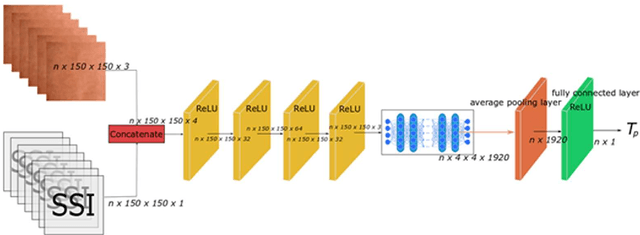
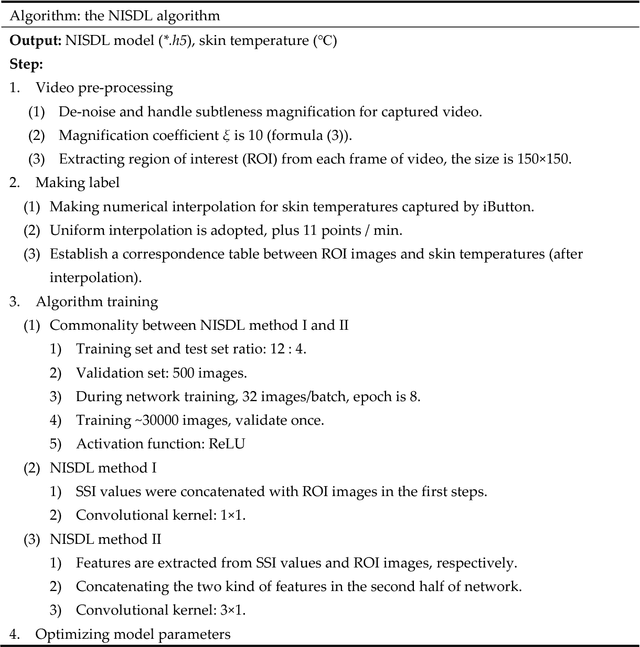
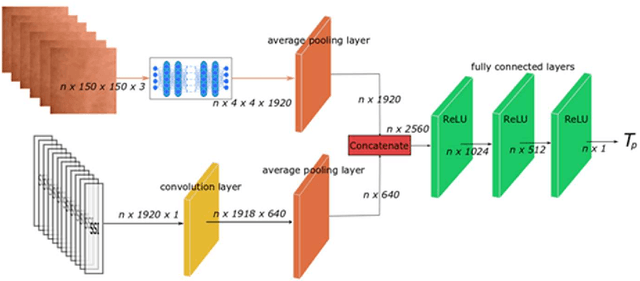

Abstract:In human-centered intelligent building, real-time measurements of human thermal comfort play critical roles and supply feedback control signals for building heating, ventilation, and air conditioning (HVAC) systems. Due to the challenges of intra- and inter-individual differences and skin subtleness variations, there is no satisfactory solution for thermal comfort measurements until now. In this paper, a non-invasive measuring method based on skin sensitivity index and deep learning (NISDL) was proposed to measure real-time skin temperature. A new evaluating index, named skin sensitivity index (SSI), was defined to overcome individual differences and skin subtleness variations. To illustrate the effectiveness of SSI proposed, two multi-layers deep learning framework (NISDL method I and II) was designed and the DenseNet201 was used for extracting features from skin images. The partly personal saturation temperature (NIPST) algorithm was use for algorithm comparisons. Another deep learning algorithm without SSI (DL) was also generated for algorithm comparisons. Finally, a total of 1.44 million image data was used for algorithm validation. The results show that 55.6180% and 52.2472% error values (NISDL method I, II) are scattered at [0, 0.25), and the same error intervals distribution of NIPST is 35.3933%.
Non-invasive thermal comfort perception based on subtleness magnification and deep learning for energy efficiency
Nov 12, 2018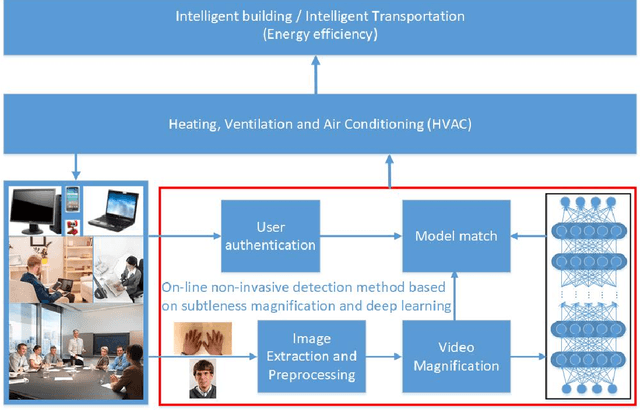
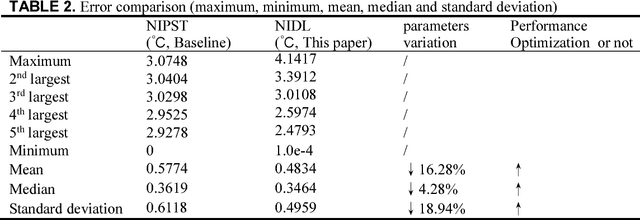


Abstract:Human thermal comfort measurement plays a critical role in giving feedback signals for building energy efficiency. A non-invasive measuring method based on subtleness magnification and deep learning (NIDL) was designed to achieve a comfortable, energy efficient built environment. The method relies on skin feature data, e.g., subtle motion and texture variation, and a 315-layer deep neural network for constructing the relationship between skin features and skin temperature. A physiological experiment was conducted for collecting feature data (1.44 million) and algorithm validation. The non-invasive measurement algorithm based on a partly-personalized saturation temperature model (NIPST) was used for algorithm performance comparisons. The results show that the mean error and median error of the NIDL are 0.4834 Celsius and 0.3464 Celsius which is equivalent to accuracy improvements of 16.28% and 4.28%, respectively.
 Add to Chrome
Add to Chrome Add to Firefox
Add to Firefox Add to Edge
Add to Edge